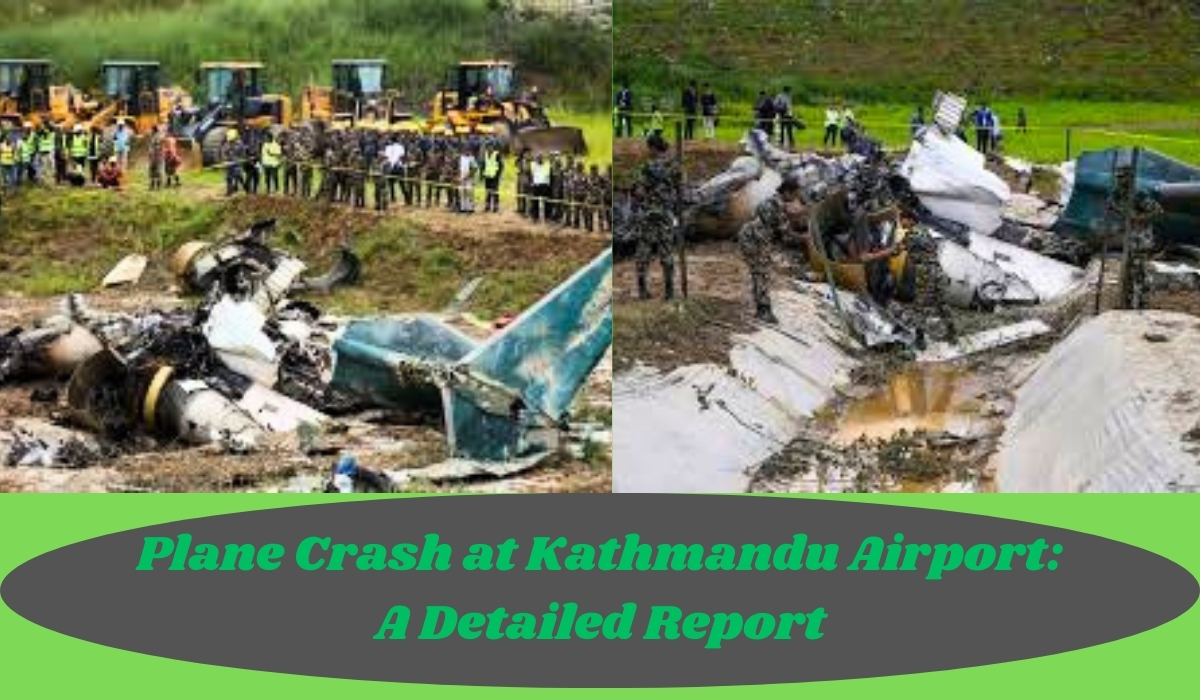Plane Crash at Kathmandu Airport: A Detailed Report

On July 24, 2024, a tragic plane crash at Kathmandu’s Tribhuvan International Airport resulted in the deaths of 18 people. The accident involved a regional passenger plane operated by Nepal’s Saurya Airlines. This detailed report provides an in-depth look at the incident, including the sequence of events, response efforts, and the broader context of aviation safety in Nepal.
Overview of the Incident
Crash Details
On Wednesday, a regional passenger plane belonging to Saurya Airlines crashed shortly after takeoff from Kathmandu. The aircraft, which was on its way for routine maintenance at the new Pokhara airport, went down and caught fire. The plane, a CRJ-200 model, veered off the runway and crashed on the east side.
- Date of Incident: July 24, 2024
- Aircraft: CRJ-200, Registration 9N-AME
- Operator: Saurya Airlines
- Destination: Pokhara Airport for maintenance
- Fatalities: 18 (including 17 technicians and 1 engineer from Yemen)
- Survivor: The captain, who is currently receiving medical treatment
Sequence of Events
According to the Civil Aviation Authority of Nepal, the plane took off from Kathmandu’s Tribhuvan International Airport and immediately veered to the right. The airplane crashed on the east side of the runway. Initial reports indicated that the plane was scheduled for a month-long maintenance starting the day after the crash.
Television footage from the scene showed thick black smoke rising into the sky and firefighters working to extinguish the blaze. The plane appeared to tilt right before crashing, and rescue workers were seen searching through the wreckage.
Response and Rescue Efforts
Emergency Response
Following the crash, Kathmandu airport was temporarily closed. Emergency services, including firefighters and rescue workers, responded quickly to the scene. They worked to control the fire and search for survivors. The remains of the plane were scattered across lush green fields, and bodies were transported to ambulances.
- Firefighters: Engaged in controlling the blaze
- Rescue Workers: Searched through the wreckage and retrieved bodies
- Ambulances: Transported the deceased and injured
The only survivor, the plane’s captain, was taken to a hospital for treatment. His condition was reported as stable.
Aircraft and Airline Details
Aircraft Specifications
The crashed aircraft was a CRJ-200, a regional jet with a seating capacity of 50. It was part of Saurya Airlines’ fleet, which includes two CRJ-200 jets. The CRJ-200 was originally manufactured by Bombardier but was acquired by Mitsubishi Heavy Industries in 2020.
- Aircraft Model: CRJ-200
- Capacity: 50 seats
- Manufacturer: Bombardier (now Mitsubishi Heavy Industries)
Airline Profile
Saurya Airlines was established in 2014 and operates domestic flights within Nepal. The airline has positioned itself as providing a “jet experience” on domestic routes, serving five destinations. The airline’s fleet includes CRJ-200 jets and other aircraft.
- Founded: 2014
- Domestic Destinations: Five
- Fleet: Includes CRJ-200 jets
Aviation Safety in Nepal
Challenges in Nepalese Aviation
Nepal’s mountainous terrain poses significant challenges for aviation. The country is home to eight of the world’s 14 tallest mountain peaks, and its main airport in Kathmandu is surrounded by mountains. This geography affects wind patterns and poses difficulties for takeoff and landing.
- Geographical Challenges: Mountainous terrain, variable wind conditions
- Main Airport: Tribhuvan International Airport, Kathmandu
Nepal has faced criticism for its air safety record, partly due to the small, remote airports many airlines serve. The accident rate has been high, with nearly 350 people dying in plane or helicopter crashes since 2000.
Historical Incidents
- 1992: Pakistan International Airlines Airbus crashed into a hillside while approaching Kathmandu, resulting in 167 deaths.
- January 2023: A Yeti Airlines crash killed at least 72 people, attributed to pilot error.
Investigation and Future Implications
Ongoing Investigation
The reason for the accident is still being scrutinized. Initial reports have not determined why the plane veered off course. The absence of a modern ADS-B transponder on the aircraft, which could have aided in tracking, may complicate the investigation.
- Investigation Status: Ongoing
- Tracking Issue: Aircraft not equipped with modern ADS-B transponder
Future Safety Measures
The incident underscores the need for improved aviation safety measures in Nepal. This includes better equipment on aircraft, enhanced pilot training, and more rigorous safety protocols.
- Safety Improvements: Modern equipment, better training, stricter protocols
Conclusion
The crash of Saurya Airlines’ CRJ-200 aircraft at Kathmandu’s Tribhuvan International Airport is a somber reminder of the challenges faced by aviation in Nepal. The loss of 18 lives and the subsequent investigation highlights the need for continued focus on safety and improvements in the country’s aviation infrastructure.
As the investigation continues, all stakeholders need to work towards preventing such tragedies in the future. Enhanced safety measures and better equipment can help mitigate risks and ensure safer flights for all.
References
- Plane Crash Incident Report:
- Reuters. (2024). Plane crash at Nepal’s Kathmandu airport kills 18. Retrieved from Reuters
- Saurya Airlines Information:
- Saurya Airlines Official Website. (2024). Retrieved from Saurya Airlines
- Nepalese Aviation Safety Records:
- Flightradar24. (2024). Tracking and Safety Information. Retrieved from Flightradar24
- Historical Aviation Incidents:
- Aviation Safety Network. (2024). Historical Aviation Incidents in Nepal. Retrieved from Aviation Safety Network



One thought on “Plane Crash at Kathmandu Airport: A Detailed Report”